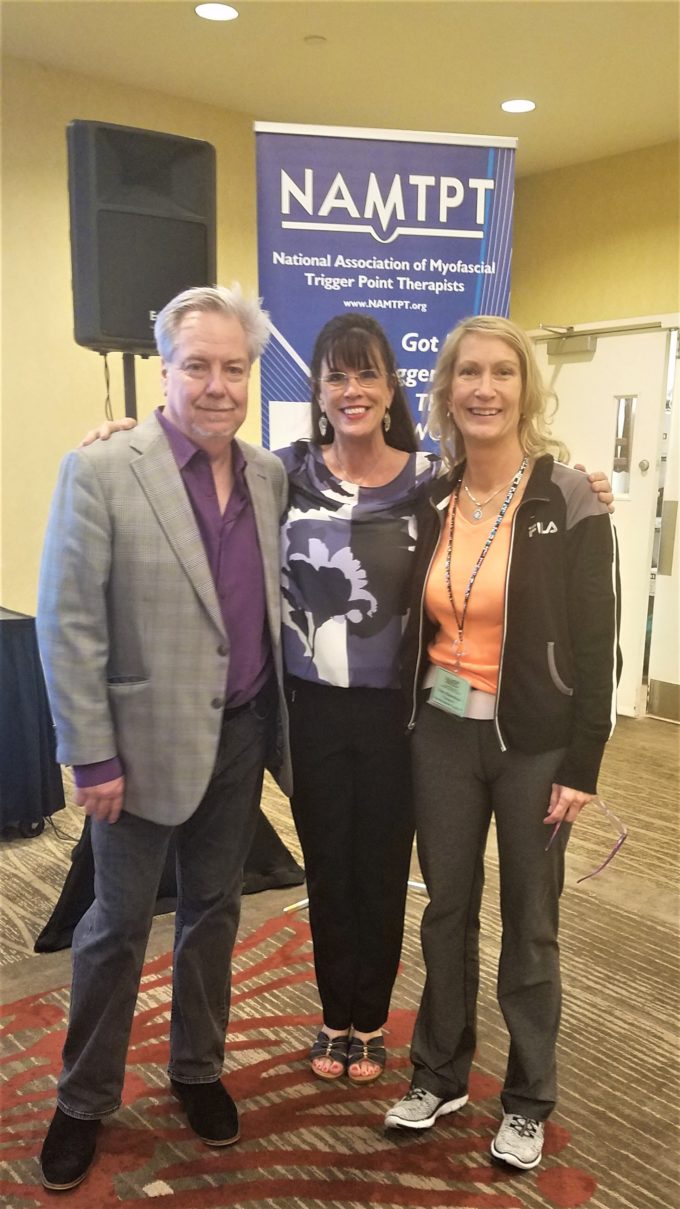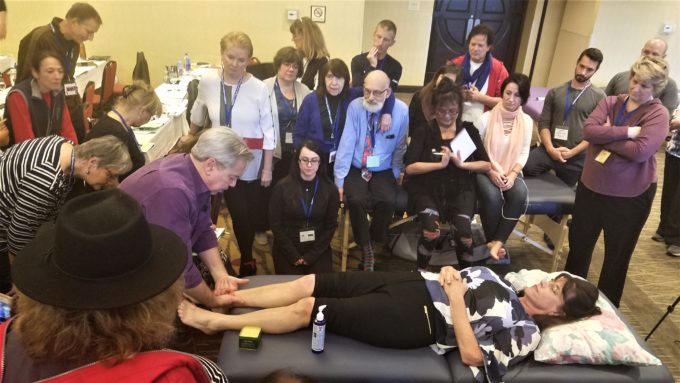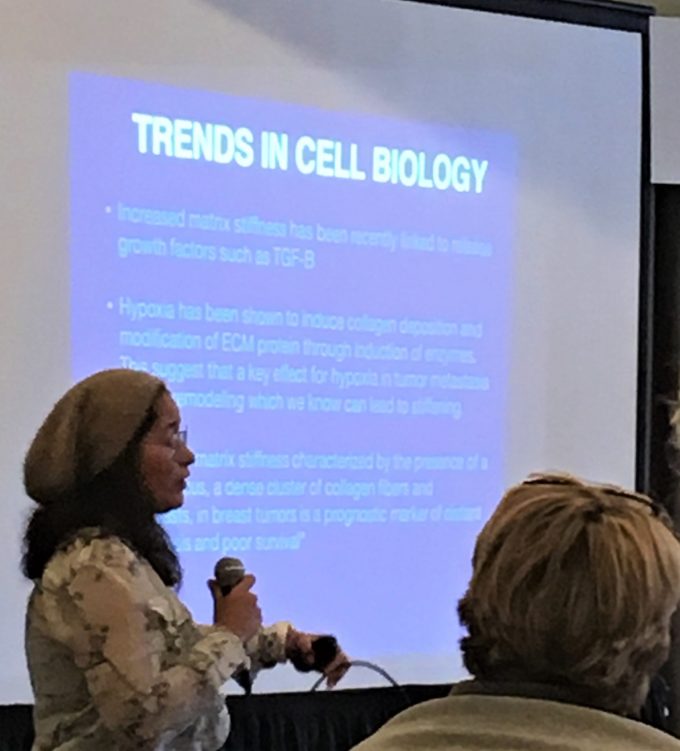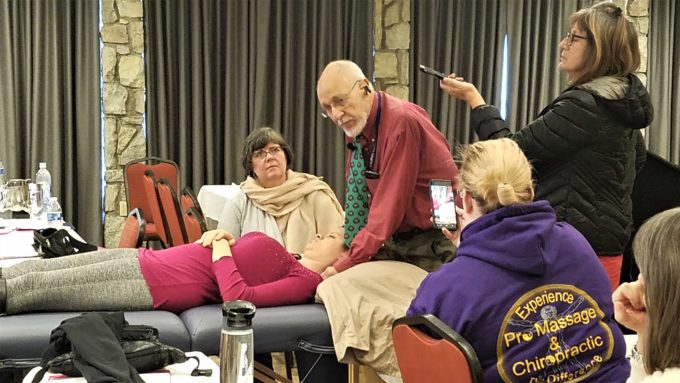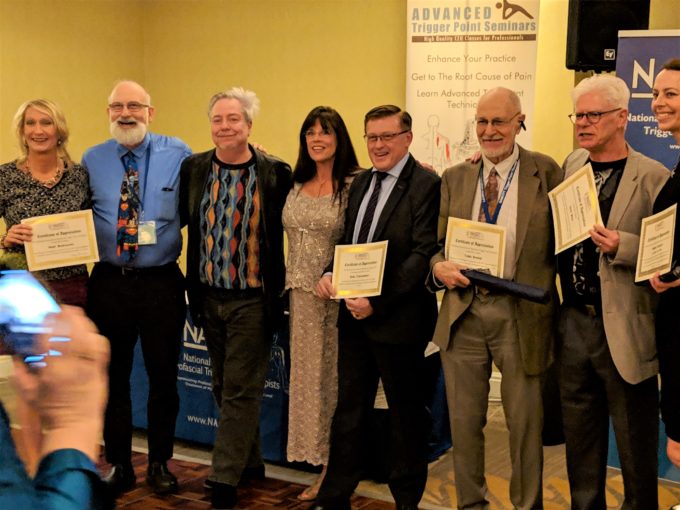by Kate Simmons, President NAMTPT
The NAMTPT hosted another fabulous annual convention this November in Pittsburgh, Pennsylvania, featuring many diverse classes taught by top-notch instructors. We were lucky to have our keynote speaker, David Lesondak, teach both a fascinating lecture expounding on his book, “Fascia, What It Is And Why It Matters,” as well as an insightful hands-on session teaching his favorite fascial release techniques for multiple areas of the body. Entertainment and food at the Doubletree Hilton were great and a good time was had by all.
The event began Wednesday, October 31st, with a comprehensive pre-conference class by Shannon Goossen, entitled, “Integrative Techniques For Myofascial Mastery,” designed to provide the attendees with the latest research on integrative functional tools and techniques for treating myofascial pain and dysfunction, as well as an introduction to her comprehensive neurological exam techniques and use of frequency-specific microcurrent by the therapist. There were many reference materials to take back to the clinic for immediate use, and others for further study. We learned a great deal about the importance of proper and accurate neurological examination in the clinical setting for myofascial pain and dysfunction and other differential diagnoses.
Thursday, November 1st, an insightful class by Mary Biancalana regarding state-of-the-art research and practical information for myofascial trigger point therapy clinicians and students.
The most outstanding presentation was regarding a paper by Jan Dommerholt, et. al., on Shannon Goossen about the neurotransmitters that govern our emotions, and how this influences our behavior and also pain management tendencies and strategies. Attendees took the Braverman Test (https://www.bravermantest.net) to determine their own neurotransmitter/behavioral profile, which provided astute information for each participant on how to best understand their own emotional and behavioral inclinations and strategies for improvement.
On Friday, November 2nd, we were treated to Shannon Goosen’s class, “Mitochondria and the Cell Danger Response: Your patients and Trauma,” which brought to light why patients with history of trauma often exhibit repetitive patterns of behavior that perpetuate pain. Manual therapy has the capability of addressing and releasing “stored” traumatic memory and behaviors in the body.
David Lesondak, Shannon Goosen and Mary Biancalana
Our keynote speaker, David Lesondak, taught for the rest of the day, beginning with his lecture entitled, “Smart Phone, Dumb Biomechanics.” Mr. Lesondak is the author of the book Fascia: What It Is and Why It Matters. Since the vast majority of people now use computers and smart phones extensively, they regularly develop musculoskeletal/myofascial pain associated with postural deviations during usage. We learned about the fascia’s role as a tissue and as a sensory feedback system, and also how to use fascia-focused palpation and manual therapeutic techniques to release dysfunctional tissue and movement patterns. Areas addressed included the anterior calf, sacrotuberious ligament, quadratus lumborum, pectoralis minor, scalenes, suboccipitals, and muscles of the forearm.
Hands-on with David Lesondak
Dr. Ross Turchaninov taught a remarkable class on Saturday, November 4th entitled, “Hands-on Training for Anterior Scalene Syndrome With Medical Massage.” The class was designed to give students a clear and detailed protocol of examination and treatment of the patient presenting with symptoms of Anterior Scalene Muscle Syndrome and Thoracic Outlet Syndrome, two extremely complicated conditions to properly assess and treat.
When patients present with upper extremity sensory and motor deficits, pain patterns, and circulatory issues, it can be a complex process to determine which areas of the upper body are affecting and/or causing those symptoms. Here are pictures form Dr. Ross Turchaninov’s class.
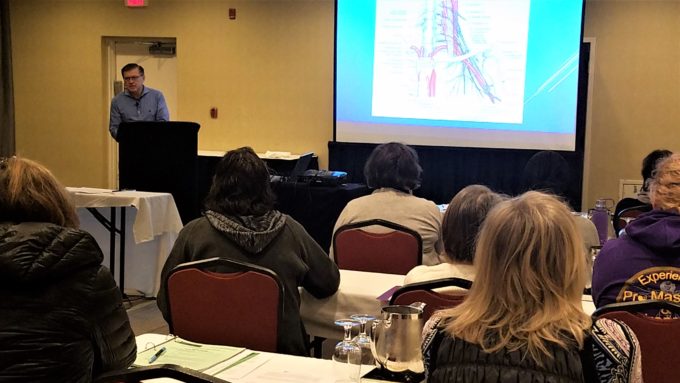 |
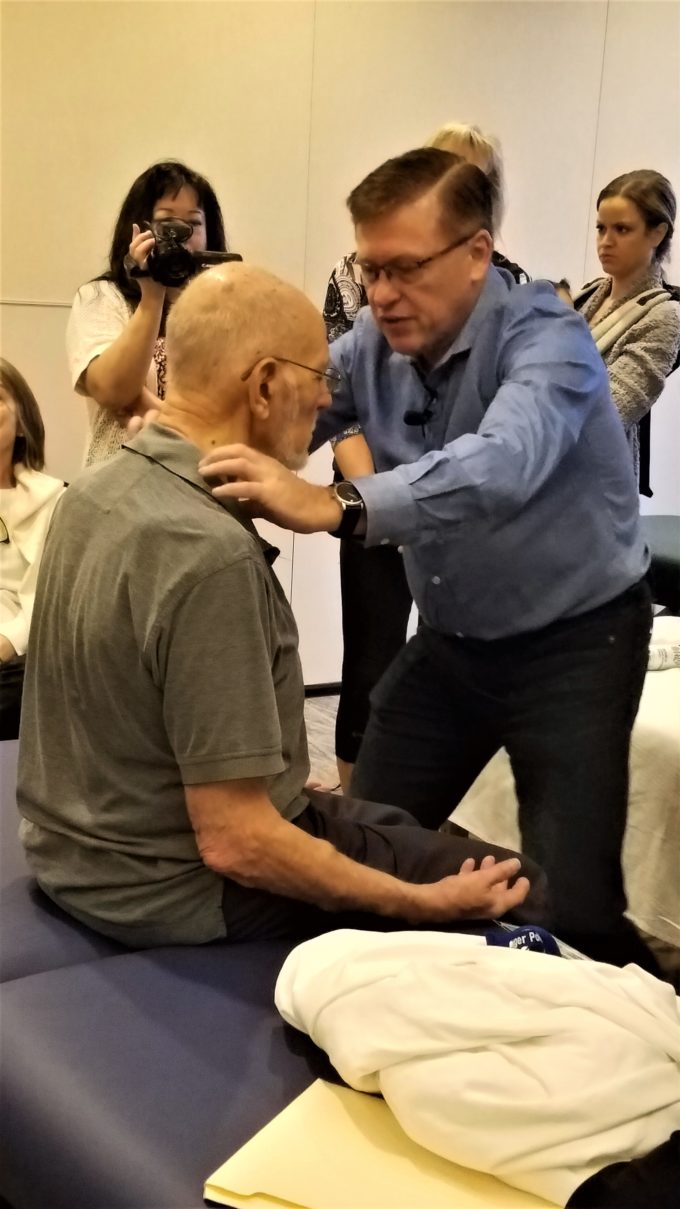 |
Clinical Theory part of the class Application of Warthenber’s Test for ASM
Dr. Turchaninov has presented a highly detailed and useful protocol to follow to determine which areas of the neck, thoracic quadrant, and upper extremity are affected in these cases. He presents this protocol on his website at: https://www.scienceofmassage.com/course/anterior-scalene-muscle-syndrome. He begins by reviewing that patients often do not present with any pain or discomfort in the neck when they are having those symptoms in the upper extremity, even when the cause of the upper extremity symptoms actually begins with the nerves emerging from the irritated brachial plexus. This is why the anterior scalene muscle is termed, “the Silent Killer.”
The class by Stew Wild, entitled “Treating Severe Low Back Pain Using Neuromuscular Therapy” was very helpful and illuminating for therapists wanting more detail regarding the basis for examination and treatment protocol for the low back pain patient. He took us through research updates, examination and assessment, lumbo-pelvic mobilization techniques, and homecare protocols for the elimination of disabling low back pain.
On Saturday afternoon, Vanessa Sifontes gave a fascinating lecture on “Oncology Rehabilitation: When Comprehensive Means Multidisciplinary – Why My Patients Need Trigger Point Therapy.”
Fascinating presentation by Vanessa Sifontes
Vanessa emphasized the necessity of utilizing an integrative treatment model including, but not limited to myofascial trigger point therapy, lymphatic drainage, and pain mitigation in order to functionally restore and work towards improving the quality of life for patients recovering from various cancer interventions.
Also, we held our Annual Award Dinner and Ceremony, where Dr. Ross Turchaninov was presented with the ‘2018 David Simons Award’ for his Medical Massage educational programs and books on Medical/Therapeutic Massage.
Sunday morning began with an interactive lecture by Richard Finn called “Trigger Point Skeptics – Understanding the Debate.” We reviewed the most recent research presented and debates within the medical community regarding the veracity of the research presented. Modern media has been a challenge to the integrity of information presented to the medical community and the public, and often creates conditions of inaccurate information being supplied, as well as diluting research methods’ integrity. We discussed the nature of these problems and ways to uphold the virtue of modern research on myofascial trigger point therapy and its informational outlets.
Following that, we were all treated to a demonstration of one of the NAMTPT’s “living legends of therapy” – Tasso Spanos, regarding, “How To Relieve Most Headaches of Myofascial Origin.” Tasso simplified and refined “122 pages of Dr. Travell and Dr. Simons in one page!”
Hands-on with Tasso Spanos
Tasso has the benefit of many decades of experience and personal training with some of the best therapists in the field, and he has always had a special knack for quickly and easily condensing clear training techniques for various myofascial problems. He went over assessment and therapeutic techniques designed to rid the headache patient of any myofascial pain component very rapidly.
All Presenters from 34th Annual NAMTPT Convention
All in all, the 2018 convention was a marvelous success, with each attendee bringing back many new techniques and useful information to their practices, enabling them to be much more quickly and competently successful in helping relieve their patients’ myofascial pain and dysfunction. We hope to see you next year for the 35th Annual NAMTPT Convention!
Category: News
Tags: 2018 Issue #4

